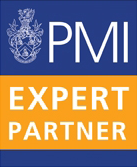Sole, but not solo
2nd September, 2019
-
There are many upsides to working in the pensions industry, not least the satisfaction of helping members achieve better outcomes for their retirement provision. Perhaps one of the downsides is when people ask you what you do for a living.
‘I’m a professional trustee’ is a challenging opening gambit and often met with vacant expressions. However, not one to give up easily, if I sense a flicker of interest I might go on to explain the different types of professional trustee. Then, we’ll get on a like a house on fire!
To prepare you for that eventuality, and as the first in what may possibly be a series of one, depending on popularity, let’s talk about sole trusteeship.
Challenge, control and efficiency
The appointment of a sole trustee for occupational pension schemes is becoming increasingly popular for trustee boards and the sponsoring employers of pension schemes. The sole trustee is a corporate body that takes on all the duties of the existing scheme trustee board. This means that key staff are freed up from time-consuming pension scheme commitments and the scheme is managed and governed by experienced professionals.
So, no more employer or member nominated trustees struggling with pensions issues that are not part of the day job. On the other hand, the scheme may lose valuable experience and insight gained over years of service. So, it is important that there is a robust process for the transfer of historic knowledge from the existing board to the sole trustee. And, it may help for there to be some continuing access to members of the outgoing trustee board that the sole trustee can refer to, particularly in the early stages of the switch.
One of the main advantages of the sole trustee is the ability to move quickly. Dispel the images of the professional trustee one hundred metres! Instead, think in terms of:
- challenging advisers and making decisions without the need to call board meetings;
- responding swiftly to changing investment market conditions; and
- shorter time frames to deliver more complex outcomes leading to more focussed and better value adviser spend.
Two is better than one
Do not, however, confuse sole with solo. Despite the moniker, sole trusteeship is a team game. To work effectively, the firm being appointed as the sole trustee should put be represented by at least two experienced professionals who must be involved in all key decisions to strike a balance and ensure good governance.
In my experience, the best sole trustee appointments bring together professional trustees from different backgrounds and blend a diversity of skills and experience to tackle different situations. The sole trustee firm should structure processes to ensure they make consistent decisions covering governance, investment matters, risk, administration and member communications. They will work collaboratively with the sponsoring employer and improve efficiencies while being sufficiently flexible to move outside ‘normal’ parameters if scheme circumstances should require.
Better outcomes
Looking to the future, the growth of sole trustee appointments over the last few years is likely to continue as defined benefit schemes mature, the demands on employer and member trustees become increasingly onerous and finding suitably skilled lay trustees becomes more and more difficult.
Sole trusteeship, if done properly, can offer a scheme strong governance, provide good member outcomes and deliver specific funding targets. As a trustee model, it provides a platform for success and is well equipped to give a pension scheme access to all the trusteeship skills it needs to keep up to date with legislative and regulatory guidelines.
So, what is it that you do?
Share article:-
Published byVassos Vassou
Vassos is a Director of Dalriada Trustees and an Accredited Professional Trustee based in our London office. Vassos works with Dalriada.Together schemes in a trustee capacity alongside his Dalriada.Together colleagues to support the running of those schemes. Vassos also has a wider...
-
Get in touch with us
Call us on 028 9041 2018 or fill out the form below and someone will get back to you.



